Borussia Dortmund is an increasingly baffling case. Their squad contains plenty of top-class talent, but they are not always able to transfer that quality to the pitch. Nevertheless, their attack delivers one spectacular performance after another. What's the secret behind their game?
Since Lucien Favre's switch to a 3-4-3 formation at the end of November, Dortmund's attacking game has shifted more and more noticeably toward pouncing on their opponents in transition or on the break with high-speed attacks. Measured build-up play is not one of their strengths. Although they often manage to shut out their opponents when they choose not to press aggressively, their build-up from the back doesn't yield enough output. The three centre-backs often get into trouble when they are closed down aggressively because they lack the requisite mobility to effectively resist this pressure. Consequently, they and the two wing-backs are often forced to make passes that lead to turnovers in possession further down the line.
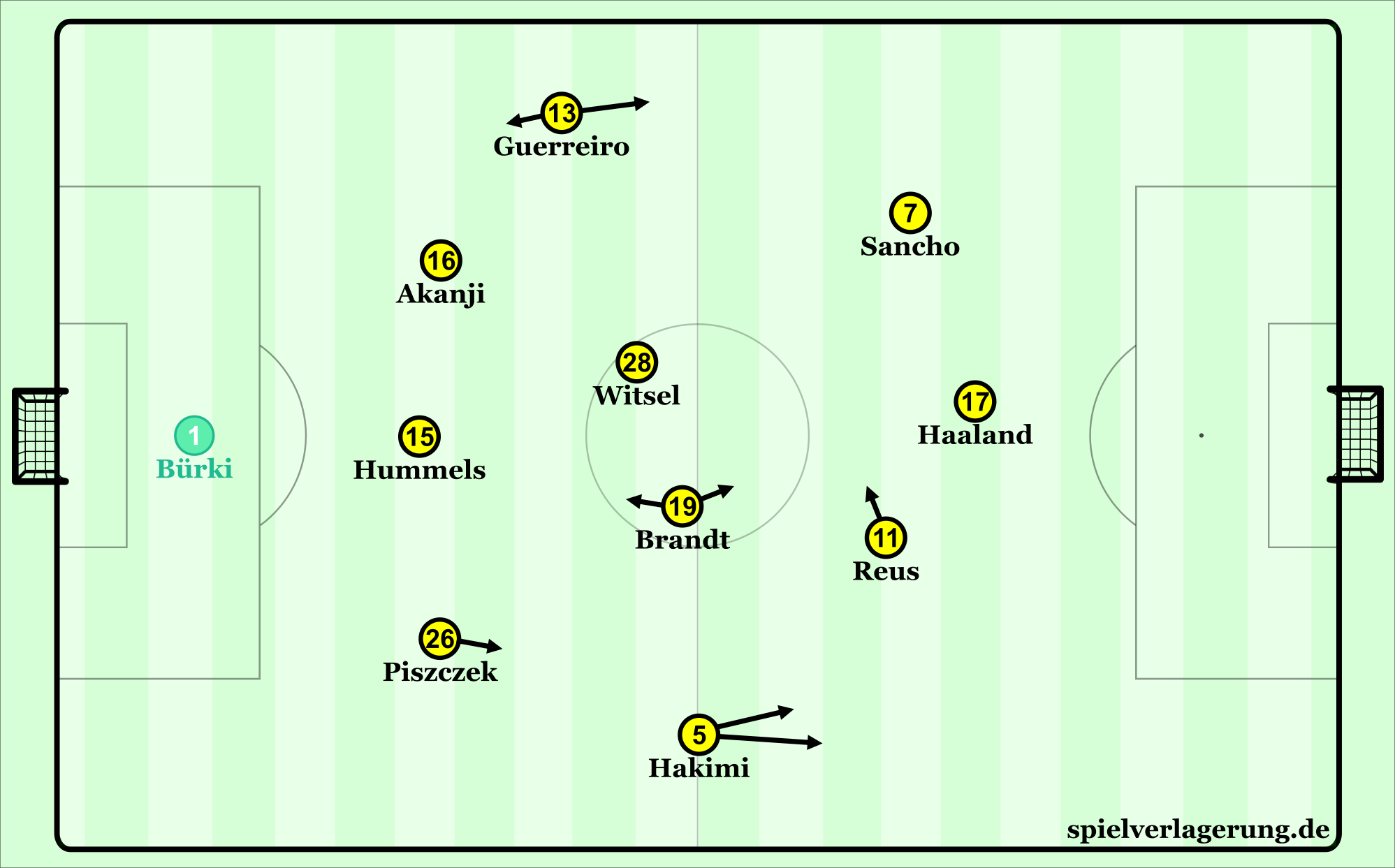
Recently, this has been exacerbated by the fact that Manuel Akanji, a right-footed player, had to play at left-back because Dan-Axel Zagadou was injured. This made it even more difficult to integrate Akanji, who has been in poor form anyway, into the team's build-up play. Meanwhile, the aging right-back Łukasz Pisczezk does not exude the same degree of reliability as he once did. Nevertheless, he is usually more involved in Dortmund's build-up play, which in the absence of Zagadou has significantly shifted to the right side. In addition to Piszczek, their build-up down the right flank usually involves playmaker Julian Brandt, wing-back Achraf Hakimi, and one of the two wingers, Jadon Sancho or Thorgan Hazard. Marco Reus also occasionally shifts out to the right to join in, either by dropping back in the style of a false nine or by taking up a slightly deeper and wider forward position behind Erling Haaland.
In theory, Dortmund has no shortage of class in this area of the pitch. Yet it is notoriously difficult for this team, with its careful, slow passing game, to play through their opponent's defensive lines and gain substantial space going forward. In comparison to the other Bundesliga teams, Dortmund have one of the least direct playing styles; they move the ball the most metres relative to the vertical distance to the goal before a goal is scored. This indicates Dortmund use lateral passes and back passes more than most teams, likely because there are no passing options higher up the field or because they have to break up their build-up when they cannot find a promising shooting position. This certainly has something to do with the strategy of head coach Lucien Favre, but still poses a problem because ball possession and offensive output are not ideally balanced. After the tactical adjustment in November, Dortmund have been able to play a bit more directly, but they are still a team that takes a long time to carry the ball forward.
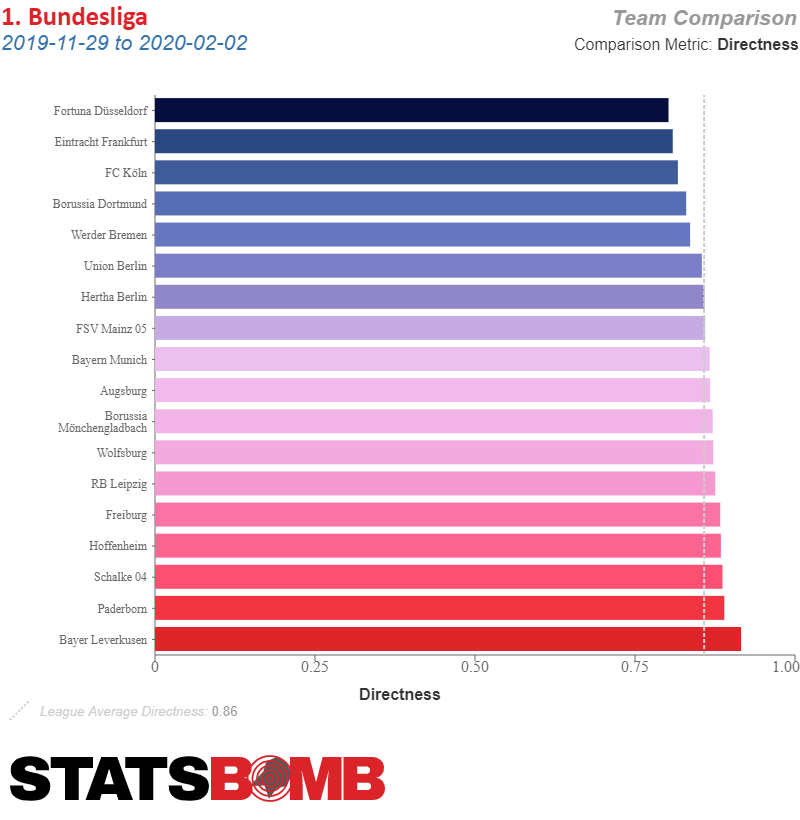
Directness is defined as a ratio of the distance toward the goal from the start of a possession that ended in a shot, divided by the total distance traveled in the buildup to the shot.
Occasionally, Dortmund take a higher risk by not circulating the ball around in the first or second third too long during the buildup, but instead opt for more direct passes and quick lay-offs. The diagram below shows an example of this from the match against Cologne. In particular, players moving in opposite directions have proven a useful tool for breaking the opponent's cover, and they are also a good fit for Hakimi's style of play. But Dortmund’s possession still needs to improve in order to be successful against teams that defend with more sophistication than the likes of Cologne and Union Berlin.
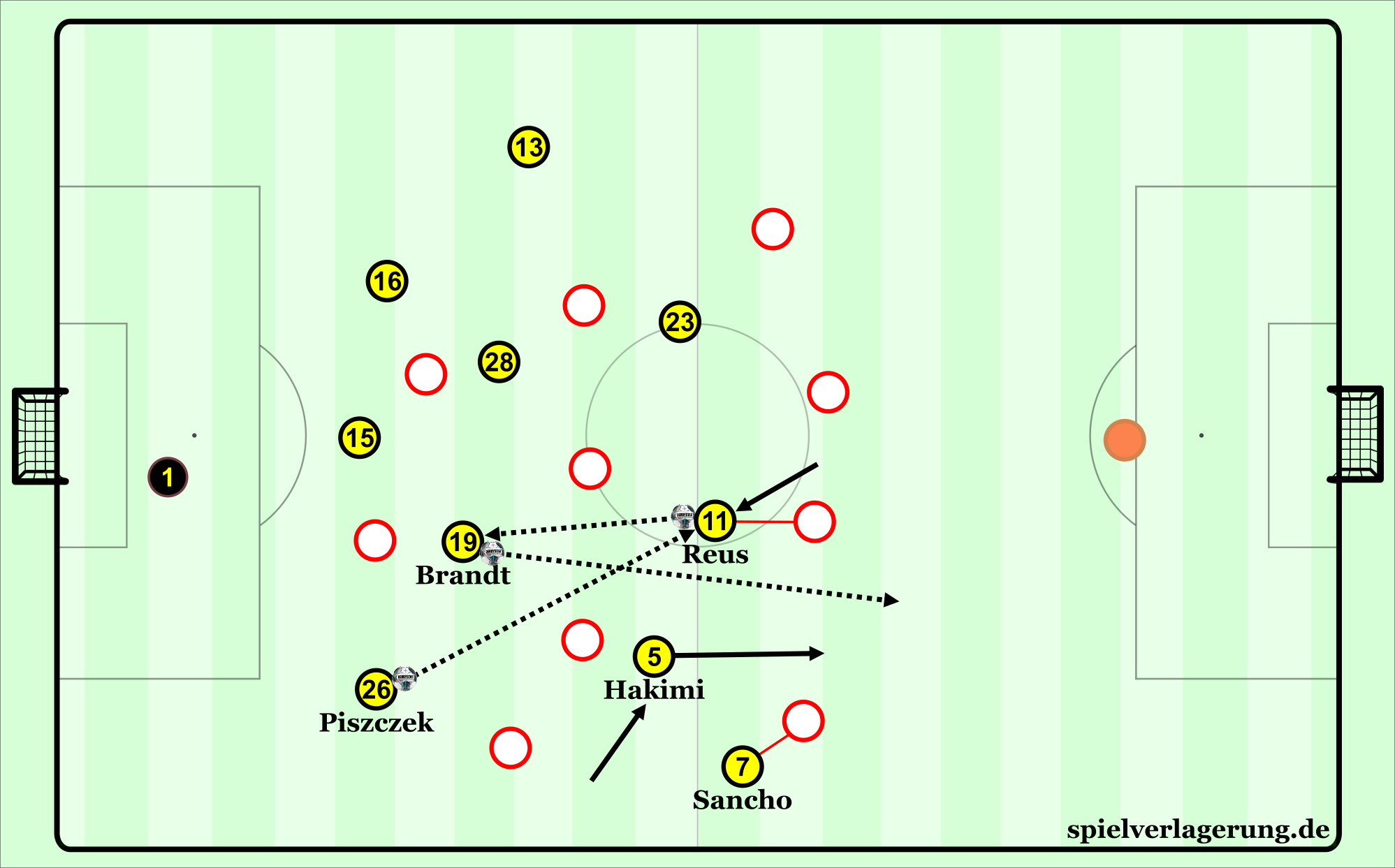
The transition game powerhouse
Leaving aside their own build-up play, Dortmund are most successful when they have the opportunity to hit their opponents on the break in transition immediately after winning the ball. It's not especially important where on the pitch exactly they win the ball; the resulting confusion in the opponent's defence is much more crucial for their success. It is precisely this confusion that Dortmund sometimes exploit mercilessly—for example, when a defender pushes up and leaves behind a gap in the backline at the time of the turnover. Although since their tactical switch Dortmund have the second-highest share of possession in the Bundesliga, just behind Bayern Munich, they are also one of the most successful counter-attacking teams in the league.
With 2.13 counter-attack shots and 4.38 high press shots per game, they are at the top of the Bundesliga. Considering their often high ball possession rate as well as the way many opponents play against Dortmund, these are impressive figures. Their 3.75 clear shots per game put Dortmund in the 94th percentile of the Bundesliga in this important statistic. ("Clear shots" are shots when only the goalkeeper is in between the shot-taker and goal.)
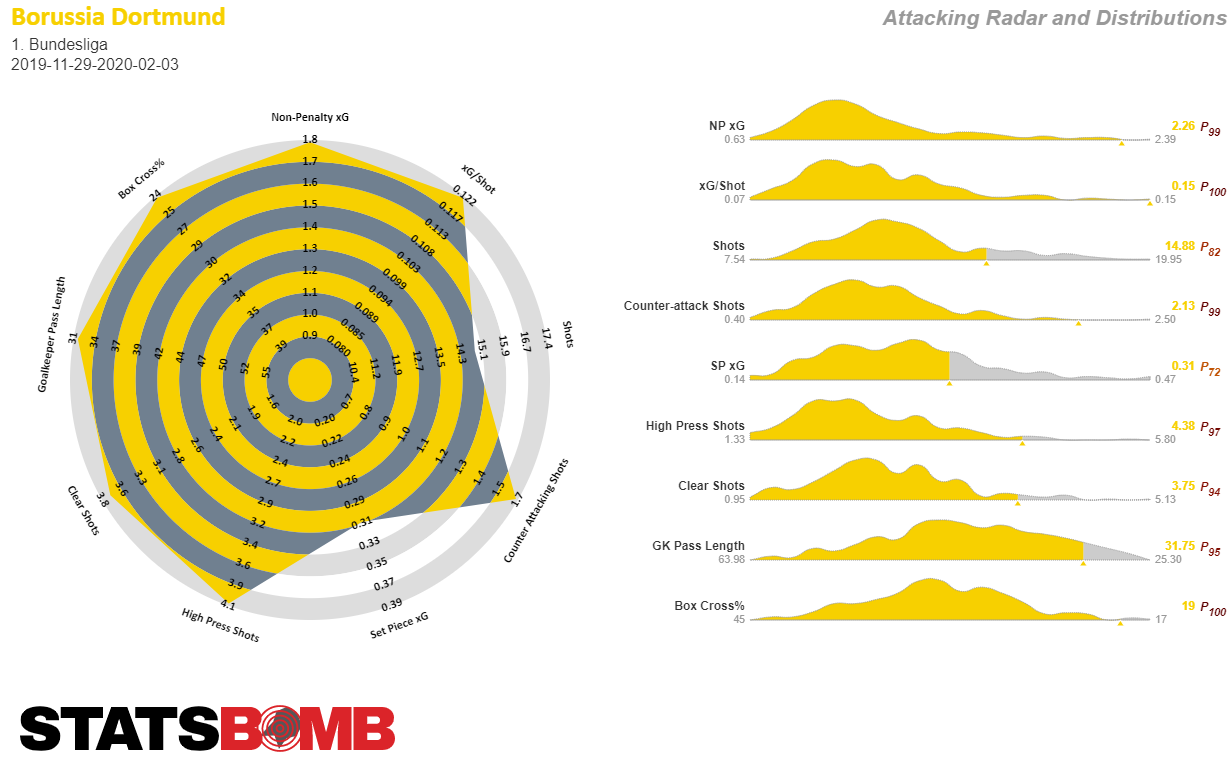
In the last eight matchdays alone, Dortmund have taken eleven shots within 25 seconds after winning the ball or initiating a new play, nine of which started in their own half. With a player like Haaland, Dortmund will have even more options on the break in the future, as the 19-year-old has a good sense of whether to stay in the centre and get into positions for lay-off passes to Reus and others, or to lure his marker out of position by shifting out to the wings. Haaland, despite his slight technical shortcomings, is an almost perfect option for the final pass from his attacking teammates behind and beside him after they carry the ball forward into the critical areas at high speed.
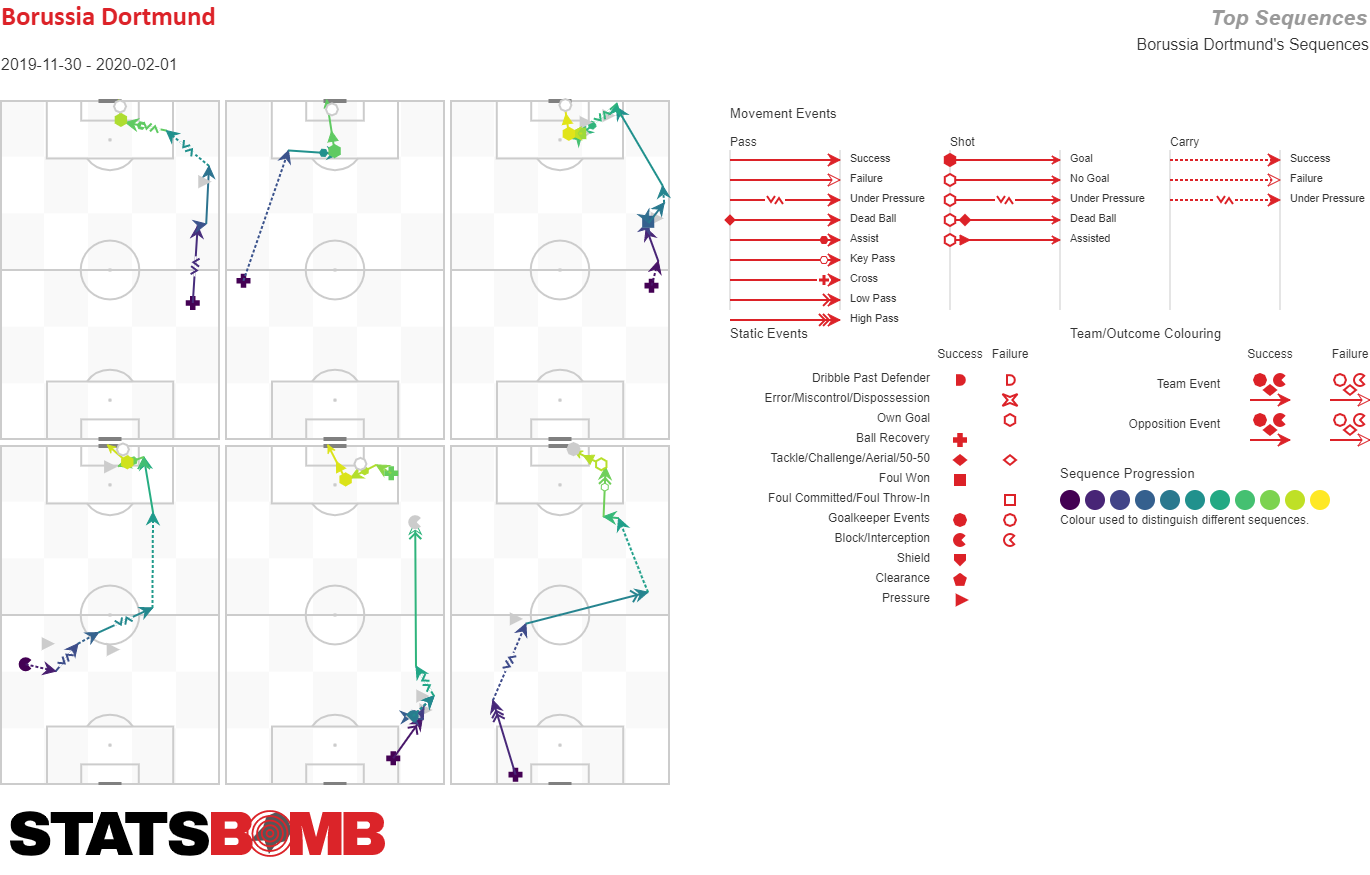
One of the main reasons for Dortmund's successful transitional play is their increasing strength in counter-pressing. More than any other team in the Bundesliga, they force counter-pressing situations and are able to pick up speed and break out of their compact shape after winning the ball. Of course, it helps that they have such fast-paced players as Hakimi, Sancho and Hazard to initiate and propel the counter-attack forward. Successful counter-pressing often leads to a lot of open space for attacks, which are by nature much easier to conclude with a successful finish. It is not for no reason that Dortmund has the most completed passes in the opponent's penalty area.

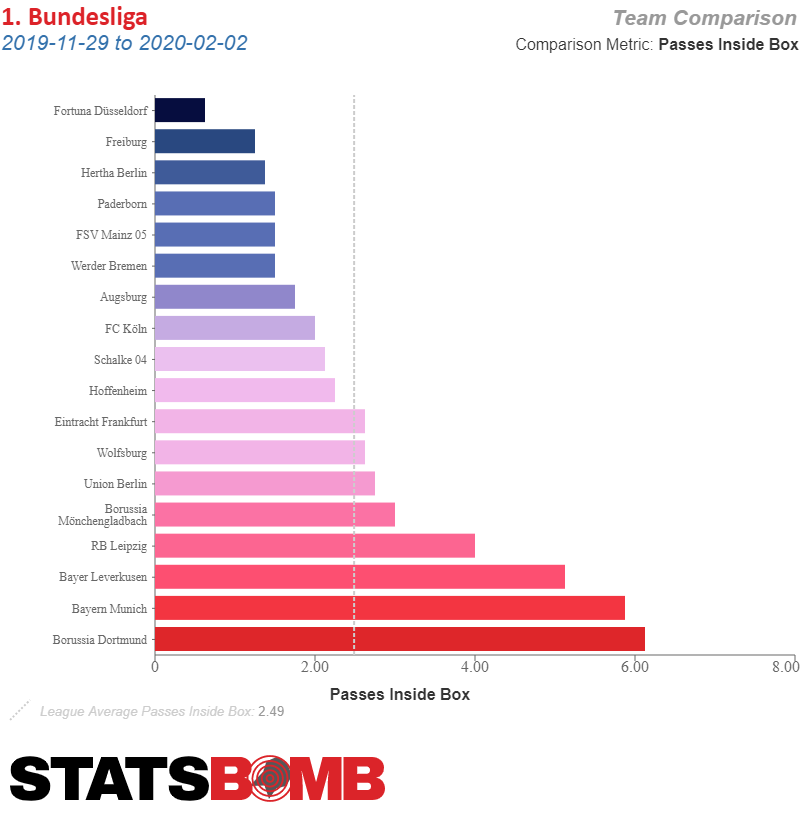
Conclusion
Attacks in transition or on the break depend on the individual quality of each player and their intuitive understanding of each other. Every situation after winning the ball is different, not repeating what came before. Borussia Dortmund have several fast players and now also a target man in attack. Moreover, with Julian Brandt and Axel Witsel, they also have powerful centre midfield in front of the defence. It therefore seems almost logical that Dortmund feel so comfortable acting at high speed.
